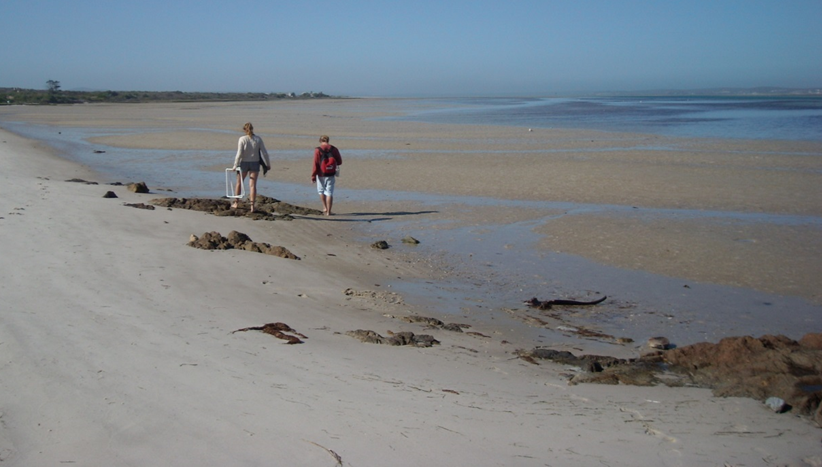The West Coast National Park (WCNP) is a unique marine protected area along the west coast of South Africa. Unfortunately the park faces many threats including pollution, urbanization, industrialization and invasion by marine alien species. One such an alien species is Sagartia ornata, a sea anemone native to the Mediterranean, Britain and Western Europe.

(Photo credit: Tammy Robinson)
This anemone was first recorded in the WCNP in the early 2000’s and although its distribution was assessed early on, no follow up studies had been conducted. That was until Cheruscha Swart undertook her honours project at Stellenbosch University under the guidance of Dr Tammy Robinson. This study revealed that S. ornata remains contained within the park, occurring in higher numbers (sometimes more than 500 anemones per m2) on sand covered rocks, fossilized oyster beds and in soft sand between the Cape eelgrass (Zostera capensis). This study also found that the anemone feeds on sand-dwelling polychaete worms and small burrowing crustaceans, changing the sandy shore community in areas where it has invaded. Interestingly, however, this change in sandy shore communities is as a result of an increase in abundance and diversity of native species brought about by S. ornata stabilising the sand and not through its role as a predator.
“We now have an updated baseline on the distribution and abundance of this anemone and the first assessment of its impact on indigenous communities within the Langebaan Lagoon. This lays a baseline for future studies on this alien species, supporting the management of this important marine protected area,” says Tammy Robinson, a marine biologist at the Centre for Invasion Biology (C·I·B).

